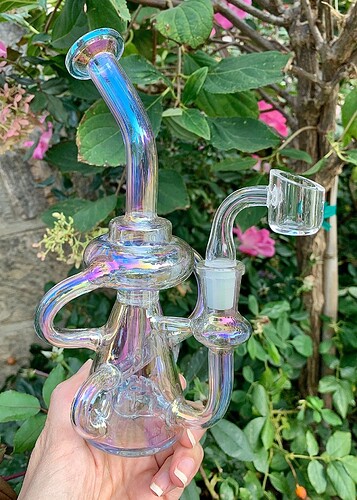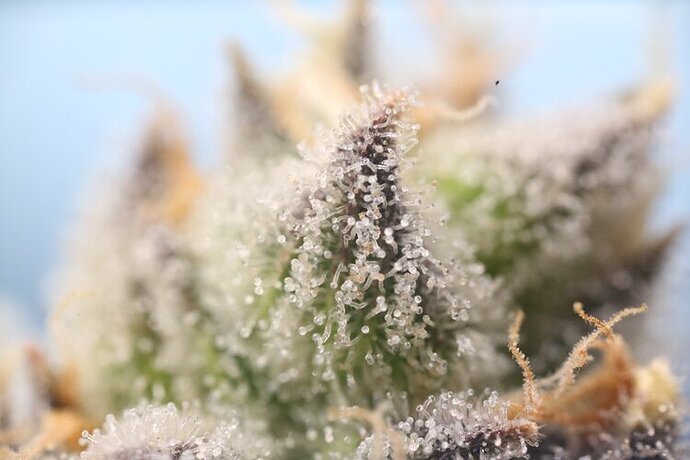Israel has some of the most scientifically advanced cannabis research on the planet. This Israeli researcher gave at TED talk about 4 years ago that may tend to dispute your assertion (and since then Israeli scientists have made some more amazing discoveries. you should look them up)-
This is a great video, but he never once mentions terpenes or any other polyphenols. He strictly talks about cannabinoids.
So no one has heard of Dr. Ethan Russo’s work on this from like a decade ago?
iTs JuSt BrO sYeNtS
It is bro science. Pharmacology is real science. Like I said above… all science points to terpenes interacting with a totally different set of systems than cannabinoids. You can’t put ear plugs in, and say they turned the volume down. They made you experiance the noise differently but they didn’t really change it at all, and they actually have nothing to do with the sound at all.
So the entourage effect is real or no?
The thing is when you distill and pulling terps off you will pull off some of those cannabinoids he’s talking about. And I say this is a person who makes his living distilling. If your concern is purely recreational and nothing to do with therapeutics then it doesn’t matter.
It is not real. 1:42:30 you can actually listen to an expert touch on the subject, and start your own journey. You can tweet @samuel_b_phd on Twitter and he’ll probably respond.
Does anyone remember Dr. Mark Scialdone talking about the entourage effect on Hash Church a couple years ago?
I thought he said something about how the non-polar nature of the terpenes helps open up some type of pathway through the blood-brain barrier that facilitates easier passage of THC.
Does that ring a bell with anyone?
We can all argue until we are blue in the face until we have the actual data.
Until then experience tells me I enjoy terpenoid-associated fractions with my cannabinoid fraction.
10 years ago people would suggest mangos and lemongrass would provide enough myrcene to help thc penetrate the blood brain barrier further than without. It seems pretty obvious to me that terpenes act as a vehicle to help deliver the cannabinoids to different places it couldn’t travel as a solid state vs a solution.
Ditto.
Real world experience definitely points toward magnification of effects with both present.
Good bot
Terpenes are the primary constituents of essential oils and are responsible for the aroma characteristics of cannabis. Together with the cannabinoids, terpenes illustrate synergic and/or entourage effect and their interactions have only been speculated in for the last few decades. Hundreds of terpenes are identified that allude to cannabis sensory attributes, contributing largely to the consumer’s experiences and market price . Terpenes Flavors to The People!
Research changes every day and anyone that claims to have all the answers is a quack doctor. The research experiment done about a year and change ago that “disproved” the entourage effect was fully debunked. University of Arizona claims just the opposite
Study shows Cannabis terpenes provide pain relief, contribute to 'entourage effect' -- ScienceDaily.
This one too
Until we have receptor binding studies AND protein pathway activation studies we won’t have the full picture.
beta-Caryophyllene preferentially binds the CB2 receptor and activates it. (It does not do this to the CB1 receptor.). This is well documented in the scientific literature, e.g. binding affinity, reversibility, and where on the CB2 receptor this terpene binds.
This leads one to believe that the relative amount of “head high” and “body high/effects” is partly a function of the (relative) amounts of this terpene in different cannabis products.
If interested, start your literature search here:
I’ll repost my last “huh” paper regarding this, posted in another thread.
“Terps” loosely termed here including other aromatics, are a major factor, and they do absolutely have effects on the CB receptors.
If they didn’t effect mood, I’d figure we wouldn’t use them in aroma therapy.
Sit with some trippy kids and have them blast rose water in your face, bet you’ll find it quite soothing and relaxing.
There’s certainly something there.
i think this is the most fair statement on where we’re at in our understanding of this theory/phenomenon/thing.
a few terpenes are confirmed to actually bind to cannabinoid receptors; hard to say they wouldn’t have something to do with modulation of experience.
a lot of terpenes don’t bind to cannabinoid receptors; however it’s likely they play a role in influencing the ‘set’ of the user, and then the cannabinoid effect has a different canvas to play on; less of a direct effect but an effect nonetheless.
some terpenes do neither, but appear to increase the absorption of other compounds.
the conception the user has that ‘this strain is an indica/sativa or is known to make me feel this/that way bc leafly or the budtender said it would’ will influence the perceived experience, because the mind is a powerful thing.
we haven’t even begun to understand the role that all those minor cannabinoids at >1%, that we don’t even see on most COAs, play when in this ratio vs. in that ratio vs. combined with this or that terpene profile.
then, the way these play out person to person, and things like the fact that long time cannabis consumers tend to notice a difference in the effect cannabis has on them when they first started vs. 10 years later (how many people do you know ‘dont smoke anymore cuz it makes me too anxious’)
i realize i’m not stating anything that hasn’t been stated already. i just think that given we’re just cracking a lot of this open, and given the incredibly complexity of testing the effects of so many variables on so many different physiologies, i don’t understand how anyone can claim that the theory as we currently conceive it be completely true or untrue. we have some clues but far from anything resembling a true understanding. it’s somewhere in between, and we should adjust the theory to fit the ongoing research. we’re just not there yet and won’t be for awhile, and that’s why it’s called a ‘theory’
hard to argue that



